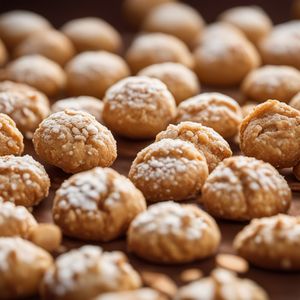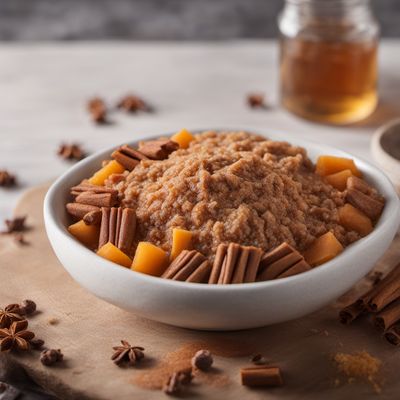
Dish
Couque de Dinant
Couque de Dinant is made with a simple dough of flour, honey, and sugar, which is kneaded until it becomes smooth and elastic. The dough is then rolled out and cut into shapes, which are baked until they become hard and brittle. Couque de Dinant has a sweet, caramel-like flavor from the honey and sugar, and is often enjoyed with a cup of coffee or tea.
Origins and history
Couque de Dinant is believed to have originated in the town of Dinant in Belgium, where it has been made for centuries. The biscuit was originally made by local bakers as a way to use up excess honey, which was a common ingredient in the region. Over time, Couque de Dinant became a beloved part of Belgian culinary heritage, and is now enjoyed throughout the country.
Dietary considerations
Couque de Dinant is not suitable for those with gluten or nut allergies, as it contains both wheat flour and almonds. It is also high in sugar and calories, so it should be enjoyed in moderation as part of a balanced diet.
Variations
There are many variations of Couque de Dinant, with different ratios of honey, flour, and sugar. Some recipes call for the addition of spices like cinnamon or nutmeg, while others use different types of sweeteners like maple syrup or molasses. Some Couque de Dinant are made with a combination of almonds and hazelnuts, which gives them a nuttier, richer flavor. Regardless of the variation, Couque de Dinant is always a delicious and indulgent treat.
Presentation and garnishing
Couque de Dinant is typically served plain, but it can be garnished with a dusting of powdered sugar or a drizzle of honey for added sweetness. It can also be served warm or cold, depending on personal preference. To make it look more visually appealing, try cutting it into smaller pieces and arranging it on a platter with fresh fruit or other sweet treats.
Tips & Tricks
When making Couque de Dinant, it's important to use high-quality ingredients, especially when it comes to the honey. Look for honey that is fresh and fragrant, and use a good quality flour for the best texture. When making the dough, be sure to knead it until it becomes smooth and elastic, and roll it out thinly for a crispier texture. Finally, be sure to bake the Couque de Dinant until it is hard and brittle for the best flavor and texture.
Side-dishes
Couque de Dinant is typically enjoyed on its own as a sweet snack or dessert, but it can also be used in other dishes. It can be crumbled over ice cream or yogurt for added texture and flavor, or used as a base for a cheesecake or tart. For a more savory twist, try using Couque de Dinant as a crust for a quiche or savory tart.
Drink pairings
Couque de Dinant is typically served on its own, but it can also be paired with other sweet treats like chocolate or caramel. It also pairs well with fresh fruit, especially berries or stone fruits like peaches or plums. For a more savory pairing, try serving Couque de Dinant with a cheese plate or a charcuterie board.
Delicious Couque de Dinant recipes
More dishes from this category... Browse all »

Aachener Printen
German cuisine

Aberffraw Biscuit
Welsh cuisine

Achappam
Indian cuisine

Acıbadem kurabiyesi
Turkish cuisine

Afghan Biscuit
New Zealand cuisine

Alfajores
South American cuisine

Almendrados
Spanish cuisine

Amaretti
Italian cuisine
More cuisines from this region...

Dutch cuisine
Simple, Hearty, Savory, Creamy

French cuisine
Elegant, Sophisticated, Savory, Creamy

Luxembourgian cuisine
Hearty, Rich, Comforting, Flavorful, Savory

Monégasque cuisine
Fresh, Light, Flavorful, Mediterranean, Seafood-forward

Occitan cuisine
Hearty, Rustic, Flavorful, Savory, Comforting

